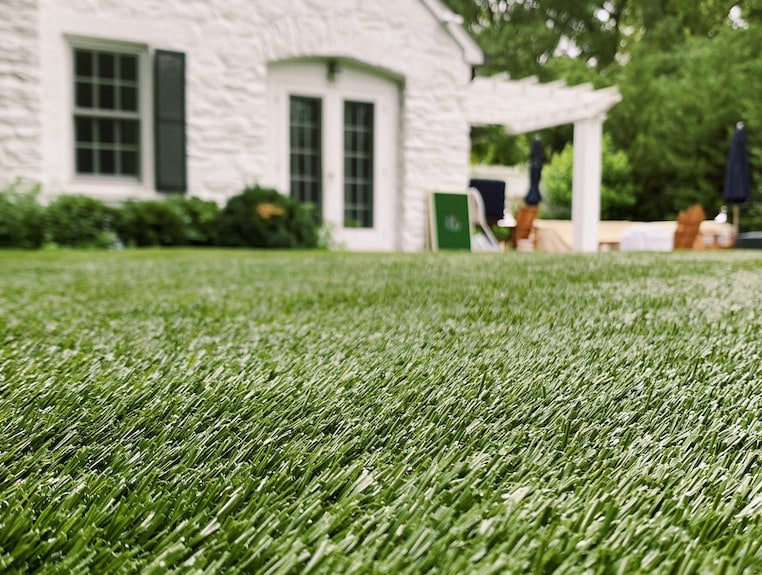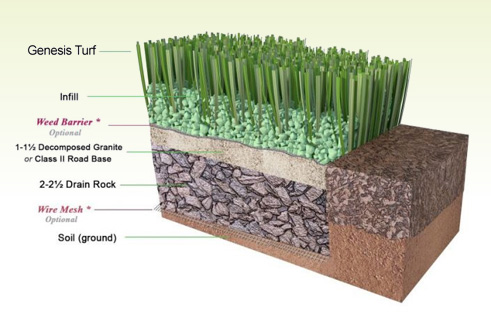Enjoy a Ideal Lawn with Arizona Artificial Turf for Any Outdoor Space
Enjoy a Ideal Lawn with Arizona Artificial Turf for Any Outdoor Space
Blog Article
Delve Into the Environmental Conveniences of Opting for Artificial Turf Solutions
The fostering of man-made lawn options provides a compelling opportunity to address pushing environmental difficulties. By considerably reducing water usage and lessening the application of harmful chemicals, these choices not only promote sustainable landscape design but additionally safeguard neighborhood ecosystems.
Water Conservation Advantages
One of one of the most considerable benefits of synthetic grass is its capability to preserve water. Traditional yard yards need considerable watering, specifically in locations susceptible to dry spell or water limitations. In comparison, man-made lawn does not need watering, dramatically reducing the total demand for water resources. This attribute is specifically valuable in dry regions where water shortage is a pushing problem.
By removing the need for routine watering, fabricated lawn adds to lasting landscape methods and assists reduce the ecological influence of too much water usage. The conservation of water extends to the decrease of drainage, which can lead to soil erosion and waterway pollution.
In addition, the installation of synthetic grass permits homeowners and towns to assign water resources more efficiently, concentrating on crucial uses such as alcohol consumption water and farming. The change in the direction of man-made grass not only promotes liable water usage however likewise aligns with broader ecological goals intended at maintaining natural deposits.
As neighborhoods significantly prioritize sustainability, the water preservation advantages of man-made turf offer an engaging situation for its fostering in residential and industrial landscape design projects.
Reduced Chemical Use
The change to synthetic grass dramatically reduces the reliance on chemical therapies generally used in natural turf maintenance. Conventional lawn management commonly involves the application of pesticides, herbicides, and plant foods to promote development and control bugs. These chemicals can present risks to human wellness, regional wildlife, and the atmosphere, adding to soil and water contamination.
In contrast, synthetic turf eliminates the demand for these hazardous substances. Once mounted, it calls for very little upkeep, mostly being composed of regular cleaning and infrequent infill replenishment. This decrease in chemical usage not just benefits the immediate environment yet additionally contributes to wider eco-friendly security. By reducing the launch of synthetic substances right into the environment, synthetic lawn advertises healthier soil and water supply.
Moreover, the lack of chemical runoff associated with synthetic grass setups helps safeguard neighborhood waterways from contamination, supporting aquatic life and keeping biodiversity. Arizona turf. As communities progressively focus on lasting techniques, deciding for synthetic grass presents a feasible solution that aligns with environmental preservation objectives. Through this change, residential property proprietors can enjoy lush green areas without endangering environmental wellness, leading the way for an extra sustainable future
Reduced Carbon Footprint

Moreover, the setup of man-made grass can result in considerable water preservation. Natural lawns require substantial amounts of water for watering, which not just contributes to the carbon footprint related to water removal and therapy yet also pressures local water sources. In contrast, synthetic grass requires very little maintenance, requiring no watering, thereby substantially decreasing water use and its linked view energy expenses.
In addition, the long life of fabricated grass adds to its decreased carbon influence. With a lifespan of approximately 15 years or even more, the requirement for regular substitutes is lessened, resulting in much less waste and lower energy consumption in production and disposing of typical lawn options. Generally, fabricated lawn presents a sustainable alternative for eco conscious landscaping.
Habitat Conservation
Environment conservation is a crucial consideration in the discussion over landscaping options, especially when contrasting synthetic grass to all-natural turf. All-natural lawn lawns often need substantial maintenance, consisting of the usage of pesticides, plant foods, and herbicides, which can detrimentally influence neighborhood communities. These chemicals can seep right into the dirt and rivers, damaging native plants and animals and interfering with neighborhood environments.
Artificial turf gets rid of the demand for hazardous chemicals, thereby safeguarding close-by wildlife and preserving the honesty of bordering environments. The installment of fabricated grass can lead to the conversion of previous grass locations right into even more biodiverse landscapes, such as pollinator gardens or native plant areas, which can support neighborhood wildlife.
Ultimately, the change to synthetic grass not just conserves water and minimizes upkeep efforts however additionally promotes an extra unified partnership in between human activities and the all-natural atmosphere, promoting environment conservation at the same time.
Long-Term Sustainability
Lasting sustainability is a critical aspect in assessing the advantages of artificial grass over typical yard lawns. One of the most considerable advantages of synthetic grass is its resilience; it can last approximately 15-20 years with minimal maintenance, whereas all-natural yard requires constant reseeding and replacement. This durability decreases the need for constant sources, such as water, fertilizers, and pesticides, which are crucial for preserving a healthy and balanced yard yard.
Additionally, synthetic grass adds to a decrease in carbon exhausts connected with grass care tools. Traditional grass usually call for gas-powered lawn mowers, leaners, and blowers, all of which contribute to air contamination. Artificial turf companies phoenix. On the other hand, man-made turf gets rid of the requirement for such tools, promoting navigate to these guys a cleaner setting
Furthermore, the manufacturing of synthetic grass significantly makes use of recycled products, improving its sustainability profile. As makers adopt eco-friendly methods, the ecological footprint go to this web-site of synthetic grass remains to decrease.

Final Thought
The adoption of synthetic grass remedies presents significant ecological benefits, including considerable water conservation, minimized dependence on hazardous chemicals, and a reduced carbon footprint. Man-made lawn help in protecting natural habitats by reducing land disturbance and promoting long-term sustainability via the usage of sturdy products. Jointly, these factors highlight the possibility of synthetic grass to add positively to environmental wellness and use a sensible alternative to conventional landscape design practices in a progressively resource-conscious globe.
In contrast, fabricated grass does not require watering, dramatically reducing the overall need for water sources. By lessening the release of artificial substances right into the ecosystem, synthetic turf advertises healthier dirt and water systems.
Moreover, the installment of artificial lawn can result in substantial water preservation. In comparison, fabricated lawn needs marginal upkeep, requiring no watering, consequently significantly lowering water use and its linked power prices.

Report this page